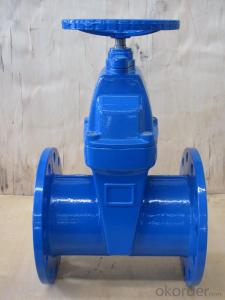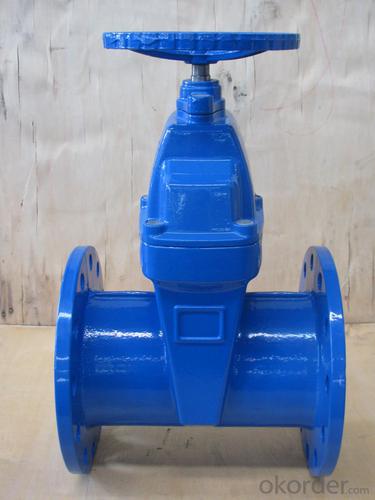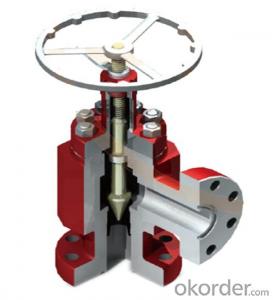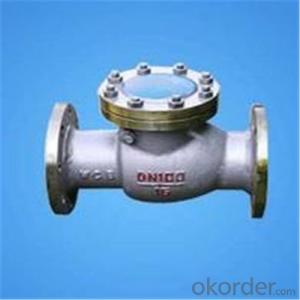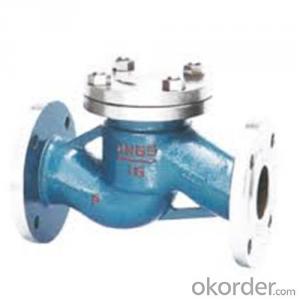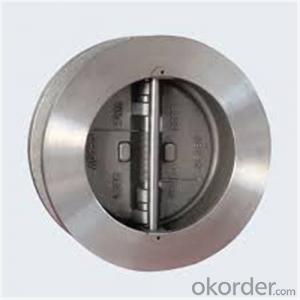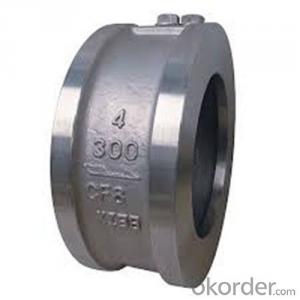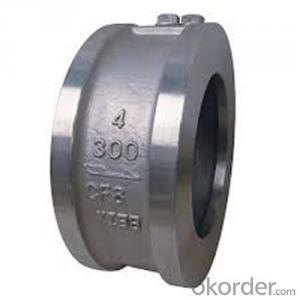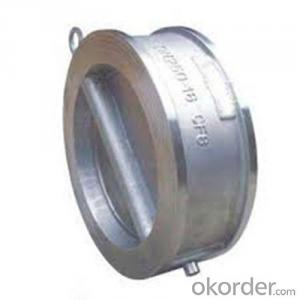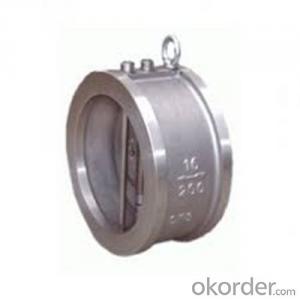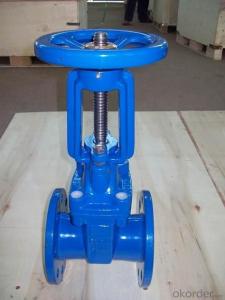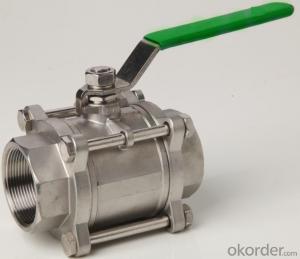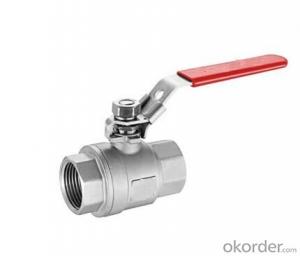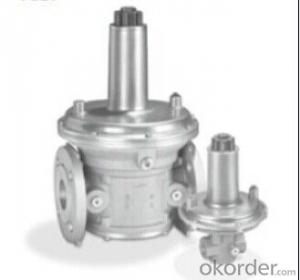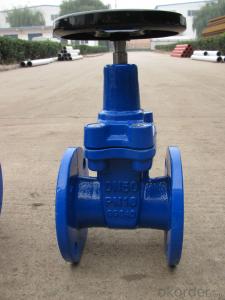Rising Stem Solid Wedge Gate Valve ISO5208
- Loading Port:
- China Main Port
- Payment Terms:
- TT OR LC
- Min Order Qty:
- -
- Supply Capability:
- -
OKorder Service Pledge
OKorder Financial Service
You Might Also Like
Type: | Non-Rising Stem |
Material: | Body: Cast Iron / Ductile Iron Wedge: Cast Iron / Ductile Iron Encapsulated with EPDM Seat: EPDM / NBR Shaft: SS410 Stem Nut: Brass O-ring: EPDM, NBR Wedge Nut: Brass / Bronze Hand Wheel: Ductile Iron
|
Operator: | Hand Wheel / Bevel Gearing / Square head / Electric actuator |
Face to Face: |
BS5163: 1986, DIN 3202 F4-F5, JIS B2002, ANSI B16.10
|
Flange: | BS4504, DIN 2532, JIS B2212, ANSI B16.10/ANSI B16.50
|
Working Pressure: | 16 Bar(200 PSI) |
Design and Manufacturer Standard : | BS5163, DIN 3352, JIS B2043 |
Test Standard: | API 598 BS6755 DIN 3230 JIS B2003 |
Application: | Water works, Sewage, Public facilties, Building industry, Petroleum, Chemical, Steel, Metallurgy, Paper Making Industry, Foods, Beverage, HVAC |
| | | | ||||||||
| | | | ||||||||
| | | | ||||||||
| | | | ||||||||
| | | | ||||||||
| | | | ||||||||
| | | | ||||||||
| | | | ||||||||
- Q: What are better valve cover gaskets for a car? Cork kind? Or the rubber kind? Or either rubber/cork kind?
- For the inexperienced I would choose rubber it is harder to mess up by overtightening and if you clean the surface it will seal good
- Q: ok, after lots of exploring around online and from some great answers from this site I have found the problem to my explorer. The torque converter solenoid mounting clip broke. thats it!! new question, do i have to take off the valve body to remove the solenoid. If so any tips? its way new territory for me. I hate automatics!!
- Yes. REMOVAL Disconnect battery ground cable. Raise and support the vehicle. WARNING: THE ELECTRICAL POWER SUPPLY TO THE AIR SUSPENSION SYSTEM MUST BE SHUT OFF PRIOR TO HOISTING, JACKING OR TOWING AN AIR SUSPENSION VEHICLE. THIS CAN BE ACCOMPLISHED BY TURNING OFF THE AIR SUSPENSION SWITCH LOCATED IN THE REAR JACK STORAGE AREA. FAILURE TO DO SO MAY RESULT IN UNEXPECTED INFLATION OR DEFLATION OF THE AIR SPRINGS WHICH MAY RESULT IN SHIFTING OF THE VEHICLE DURING THESE OPERATIONS. Remove the transmission fluid pan, filter, and gasket. NOTE: If a transmission has been disassembled to replace worn or damaged parts and the valves in the main control valve body stick repeatedly from foreign material, the torque converter must be removed and cleaned by using a mechanically agitated cleaner, such as Rotunda Torque Converter/Fluid Cooler Cleaner 014-00028 or equivalent. Unclip main control valve body wire harness. - Lift up on wire harness guide and protector and disengage the retaining pins from the solenoid clamps. Disconnect the six solenoid electrical connectors. (1) Disconnect the SS1, SS2, SS3 and SS4 electrical connectors. (2) Disconnect the torque converter clutch (TCC) solenoid electrical connector. (3) Disconnect the electronic pressure control (EPC) solenoid electrical connector. Remove the manual control valve detent lever spring. (1) Remove the manual control valve detent lever spring bolt. (2) Remove the manual control valve detent lever spring. Remove the low/reverse servo cover bolts. (1) Remove the low/reverse servo cover bolts. (2) Remove the low/reverse band servo cover and gasket. Discard the low/reverse servo separator plate cover gasket. Remove the low/reverse band servo piston and rod. Do not remove the two (gold) bolts specified. CAUTION: Support the main control valve body. Remove the 23 main control valve body (black) bolts. CAUTION: Support the main control valve body. Remove the main control valve body.
- Q: 2004 R6. Runs really well... never had a problem. Has 24K miles on it. Yamaha calls for them to get readjusted at the 26,600 mile mark. So I have a few thousand more and then I'm gunna have them adjusted.I can already hear them tick especially at idle because when riding, my exhaust is so loud and all you can hear is that and the wind. Anyway, this time will come up before I know it.Just curious... what happens if the valves remain loose? Will it affect performance? How do you they become loose and is it ok to ride a bike with them like that... atleast until the specific mileage when they are supposed to be adjustd?
- Your ears do not determine if a valve is loose. The feeler gauge determines if the valve is loose. A tight valve will burn. Check/replace camchain tensioners.
- Q: Hi....my boyfriend is currently waiting to have heart valve replacement surgery and im a little worried about the whole thing...he doesnt like talking about it but if someone knows the answer to my questions I'd be so greatful!!First of all a little detail....he is 19, as far as i know he was born with this problem with his valve but it has got worse over time. he was also born with a hole in his heart but had an operation as a baby to fix this. he gets short of breath and often has pains in his chest. he says hes going to have a pigs heart valve to replace his, by open heart surgery (in a few months time). my main worry is whether the operations are always successful? and will this condition/operation affect his life expectancy??please if there are any experts in the field help put my mind to rest....!thanksshelly x
- Open heart surgery is always a risk, as is any major surgery. The main risks are from infection and blood clots. The risks taper off very quickly within a few days after the surgery. Heart valve replacements are a common operation, with a high success rate. Life expectancy is generally better with a valve replacement; but not all valve problems reduce life expectancy to begin with. Sometimes the trade-offs are more of an issue with quality of life, with higher quality achieved with a functioning heart valve, so some people may be taking a medical risk to obtain higher quality of life. No one can tell you for certain what the outcome of this operation will be. The odds are very high that everything will go perfectly and he will fell better than ever before. There is a very small chance that he will end up worse To put the risks in perspective, a person i know had minor surgery to her knee - a simple 1 hour operation done at an outpatient clinic. Ten days later, a clot broke loose and she died in her sleep. I have had the same operation twice and didn't even miss more than a few hours of work. Another person i know had severe heart problems and docs said it was terminal, but an operation could prolong his life maybe 5-7 years. He had the operation and its now been almost 20 years and his cardiologist says his heart is healthy and there's no reason why he might not live another 20 years or more.
- Q: Model 28 BS 12.5 HP engine intake valve sticks. Please advise.When under a full load like tall grass, it runs great, but when the load is not as heavy, the intake valve sticks open, spewing gas back through the carb and mis-firing.
- Are you sure that the valve is sticking or is the carburetor flooding?
- Q: ok im buying an aftermarket blow off valve for my car. the car itself is taken apart completely and i have no idea wht vacuum lines go where. i know tht the top nipple of the bov has to be connected to the throttle body but it has 5 lines. does it matter what line is connected to it?
- Don't do it. First of all, if you knew enough about turbo charging or supercharging, blow off valves, bypass values, hooters, etc., then you would have known we need to know the size of engine, model of turbo, piping diameter, etc. The actual control lines are not that complex. By using your tongue you can tell what each line is ported to, and then you just need to know if you blow off valve is operated by vacuum or lack of vacuum. They make both types. And your throttle body will have ports on both sides of the plate. And yes, it does very much matter. Turbo charging is not for the novice to fool around with.
- Q: The Hawker Tempest was the fastest piston powered airplane ever made, it had a sleeve valve engine. It was made obsolete, by the Me 262 and other jet engined fighters, But it's engine was the ultimate piston aircraft engine. Then piston engines became something for inexpensive planes, but why has the sleeve valve not undergone further development as a sports car engine?
- this has been tried and failed miserablly mainly due to cost they ran a steel sleeve in a aluminum block and due to the differences in cooling the engine was subject to failure within 30,000-40,000 miles
- Q: i recently had a new condensing boiler and water cylinder replaced the existing radiators all have thermostatic valves fitted to them and worked fine until the boiler was replaced now all of my radiators when turned on, get as hot as the radiator without the valve on, i put each valve on number 2 which should be slightly warm, instead they are very very hot to the point you cant hold your hand on them for long one of the bedroom radiators can be heard bubbling like a kettle, i find it hard to believe all the valves could suddenly develop a fault could there be another reason for this ie fault with the fitting of pipework i am really concerned as we have young children in the house any thoughts on this much would be much appreciated
- Actually, the thermostatic valves do control the temperature of the water in the radiator. I suspect the new boiler is storing water much hotter than the old one, because of the threat of legionella breeding there. A thermostatic mixing valve may have been installed at the point the water leaves the boiler, to introduce cold water as it heads out to the radiators, hoping to make the water closer in temperature to what you actually want in the radiator for heat. If they have the mixer adjusted too hot you can adjust that to have the water leave the mixer cooler than it is now. If there is no mixer in your new installation, then you would need to reduce the setting on your individual radiators to adapt to the hotter water they are using in boilers now, due to legionaire's disease.
- Q: I've been working on cars since around march of 2012. I new. I have a set of 305 heads that were really dirty. It came from a 79 camaro that never had an Oil change. I took the valves out and the valves are pretty burnt. I was wondering If I cleaned them up would they still be good to use? The edges aren't rough or anything. Just let me know what is need to know please. The heads I know are still good.
- People reuse valves all the time, just need to inspect them for straightness, keep them in the same locations in the heads and relapping them is a great idea also.
- Q: I have several stations in my automatic lawn sprinkler system. Each station has a valve that contains: 1. Manual Shutoff, 2. Flow Control Knob, 3. Solonid, 4. Anti-Siphon valve. Any way my question is this, Why does water continue to flow even when the manual shutoff is turned off and the flow control is also turned off?
- the guy above me got to it before i did. sounds like either a diaprham has just gone out, or the solenoid plunger is stuck, or there is a rock or something inside the valve, not closing it all the way. like trying to close a door with your foot in it. it will not close all the way. A word of advice would be to go ahead and replace the anti-siphon valves with regular inline valves. anti-siphon valves are pretty much junk any type. As far as diagnosing the problem now, 1. check your timer's programming and make sure that its not sending out power to this zone all of the time. ( this would make the timer bad). 2. carefully open the valve up ( with the water turned off of course), and inspect the diaprham. if it has any tears or ripps in it, get a new diaphram, if not, then flush the lines out with the valve open to see if any debris is in the line( rocks pipe pieces, etc.) and clean it out. 3. take out the solenoid and make sure the plunger in it is not sticking. ( if so replace the solenoid). 4. if all else fails just simply cut out and replace the entire valve and plumb in a new one properly. personally i would use either Hunter PGV valves, Rainbird DVF 100 valves, or Irritrol 205 series valves. all are inline models. antisiphon valves tend to fail. i work on sprinkler systems full time for 95 $ per hour of labor for our company. hope this can help you out John A
Send your message to us
Rising Stem Solid Wedge Gate Valve ISO5208
- Loading Port:
- China Main Port
- Payment Terms:
- TT OR LC
- Min Order Qty:
- -
- Supply Capability:
- -
OKorder Service Pledge
OKorder Financial Service
Similar products
Hot products
Hot Searches
Related keywords
